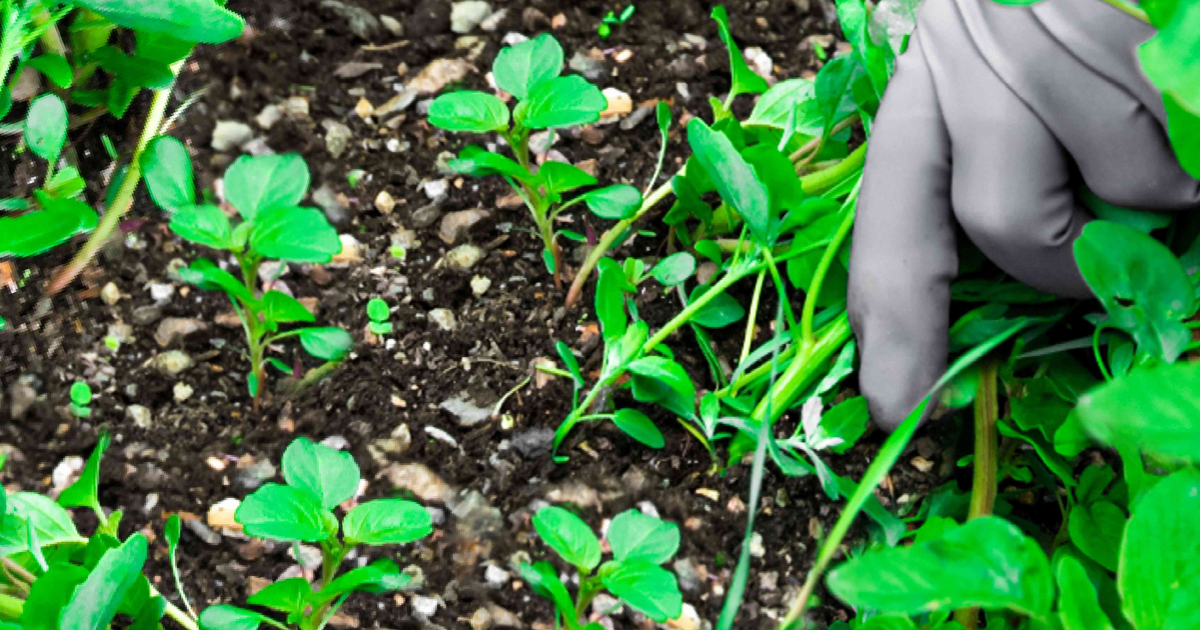
Crabgrass is the most prevalent and nuisance weed that is present in lawns, gardens, and fields in most parts of the world. Its quick growth rate, resistance, and profusion in bad soil conditions make it a very tough competitor for landscapers and gardeners. Knowing the various species of crabgrass can assist in proper management and control of the weeds from spreading. In this article, various species of crabgrass, their nature, and proper ways of controlling them are discussed.
What is Crabgrass?
Crabgrass (genus Digitaria) is an annual, fast-spreading grassy weed that performs well in hot weather. Crabgrass germinates in late spring, develops during the summer, and will perish with the first frost. Crabgrass is infamous for taking over lawns quickly and spreading if it isn’t controlled. Crabgrass gets its name from its sprawling, low growth pattern, which has a crab-like appearance.
Common Crabgrass Species
There are quite a number of crabgrass species, but the most prevalent include:
1. Large Crabgrass (Digitaria sanguinalis)
Large crabgrass, or hairy crabgrass, is one of the most common North American species. It is noted by:
- Flat, broad leaves with fine hairs
- Thick, stemlike roots at the nodes
- Seed heads that produce finger-like clusters
- Grows to a height of up to 2 feet if not cut
Large crabgrass grows well in disturbed soil and is found in lawns, gardens, and roadsides.
2. Smooth Crabgrass (Digitaria ischaemum)
Smooth crabgrass is another common species that is very similar to large crabgrass but with some notable differences:
- Smooth, hairless leaves
- Shorter growth habit
- More dense and compact clumps
This species likes well-manicured lawns and is frequently found in open, sunny areas.
3. Southern Crabgrass (Digitaria ciliaris)
Southern crabgrass or tropical crabgrass is widely seen in warm areas. It is similar to big crabgrass but grows more vigorously under tropical and subtropical conditions.
Important characteristics are:
- Hairy stems and leaves
- Prostrate habit
Seed heads with 2 to 9 finger-like branches.
4. India Crabgrass (Digitaria longiflora)
India crabgrass mainly occurs in the tropics and becomes less frequent in temperate areas. It is characterized by:
- Narrow, long leaves
- Fine leaf hairs on stems and leaves
- Prostrate growth habit
- Small seed heads
It is especially invasive in fields.
5. Blanket Crabgrass (Digitaria serotina)
Blanket crabgrass is an obscure species that creates dense mats upon the ground surface. It occurs in tropical and subtropical areas, especially sandy soils.
Major characteristics are:
- Thin, wiry stems
- Minute leaves
- Low, spreading growth habit
Life Cycle of Crabgrass
Crabgrass has an annual life cycle, and it consists of four stages:
Germination: Crabgrass seeds germinate when soil temperatures routinely reach approximately 55°F to 60°F.
Vegetative Growth: The plant develops leaves, stems, and roots, growing into dense clumps.
Reproduction: Seed heads form, usually in late summer, releasing thousands of seeds.
Dormancy: The plant kills with the first frost, leaving seeds behind that survive winter in the soil.
Why is Crabgrass a Problem?
Crabgrass competes with desirable plants and grasses for water, sunlight, and nutrients. Crabgrass can rapidly dominate lawns, producing unsightly patches and reducing the overall turf quality. Crabgrass also carries pests and diseases, further degrading lawns and gardens.
How to Identify Crabgrass
Early identification of crabgrass is important for successful control. Important identification characteristics are:
- Low-spreading, low-growing habit
- Flat, broad blades with a pointed tip
- Seed heads that look like fingers or spikes
- Stems that root at the nodes
Control Methods
Successful crabgrass control is based on a combination of cultural, mechanical, and chemical methods.
1. Cultural Control
- Keep your lawn healthy and thick to suppress crabgrass.
- Mow grass at recommended height (3 to 4 inches) to shade the soil.
- Water deeply but infrequently to encourage deep rooting.
2. Mechanical Control
- Hand-pull small infestations of crabgrass before they produce seed.
- Use a hoe or cultivator to kill crabgrass in garden beds.
3. Chemical Control
- Pre-emergent herbicides stop crabgrass seeds from germinating.
- Post-emergent herbicides kill actively growing crabgrass plants.
Prevention of Crabgrass
Prevention is the optimal approach for controlling crabgrass. Most important preventive steps are:
- Spraying pre-emergent herbicides in early spring
- Overseeding lawns to form dense turf
- Maintaining the lawn on a regular basis, including fertilization and appropriate mowing
Conclusion
Crabgrass is an aggressive and invasive weed that can rapidly overgrow lawns and gardens unless controlled. By knowing the various types of crabgrass species, their habits, and the most effective means of control, homeowners and landscape professionals can successfully fight this pest. Integrated combinations of cultural methods, hand pulling, and chemicals will yield the best results in preventing crabgrass from taking hold. With steady effort and proper lawn maintenance, it is achievable to have a healthy, crabgrass-free environment.







